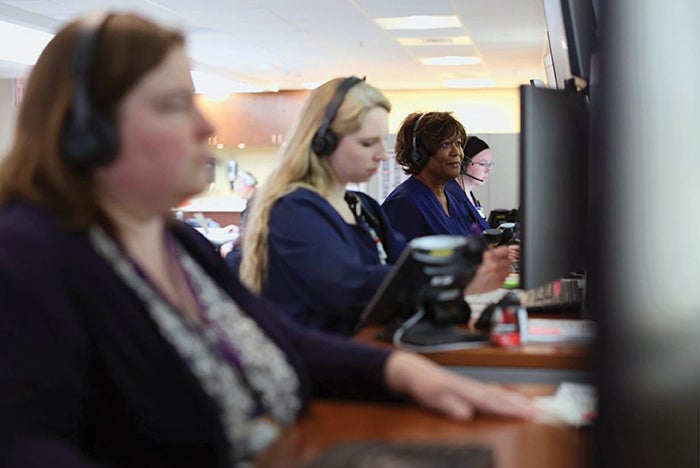Guthrie scales up virtual support team

Virtual nurses play an integral part in ensuring Guthrie keeps up with patient demand.
Image courtesy of Guthrie
Like many health systems serving rural areas, the Guthrie health care system based in Sayre, Pa., faced severe staffing shortages during the pandemic. This led the system to implement an integrated artificial intelligence-supported video solution that allows fewer staff within facilities across New York and Pennsylvania to attend to more patient needs. By selecting vendor-agnostic solutions that integrate with the system’s electronic health record software, Guthrie laid the groundwork for a scalable virtual support team that it continues to expand.
The first component of the “Guthrie Pulse Center” was a telesitting program designed to provide visibility into patient fall risks from a central location using in-room cameras. That expanded into a virtual nurse program that allows experienced critical care nurses to support newer nurses via cameras, in-room computers and audio monitors.
Terri Couts, chief digital officer at Guthrie, explains that the typical technology installation requires taking a bed out of service for about four hours, primarily in older facilities where network cables or wiring had to be run.
In some cases, installation was extended by the need to readjust cameras to ensure visibility into key areas of the room. “For example, for our virtual nursing program, the cameras help with second signoffs for high-risk medications, so [staff] have to be able to see the IV pump,” Couts says.
“There were also placement considerations for the speakers and the microphone to make sure that we didn’t capture noise interfering with the voice of the patient or the nurse.”
Cameras and speakers use artificial intelligence to interpret input in real time and highlight circumstances that require the telesitter’s attention. The system is trained to distinguish patients from nonpatients by learning room layouts, beds and patient gowns. The system has also learned to identify actions associated with a higher risk of falls based on factors such as positioning and movements.
Couts explains that the next program expansion will be multifunctional televisions that allow patients to see the virtual registered nurse, not just hear them. TVs will provide additional functionality too, as a digital whiteboard and support for virtual consults. That multifunctionality is key for moving forward, Couts says. The goal is to involve environmental services staff and potentially respiratory staff, among other departments.
Today, two staff members are able to monitor 50 cameras across five hospitals in the Guthrie system. That support, Guthrie estimates, has helped it reduce its labor costs by more than $7 million annually.




